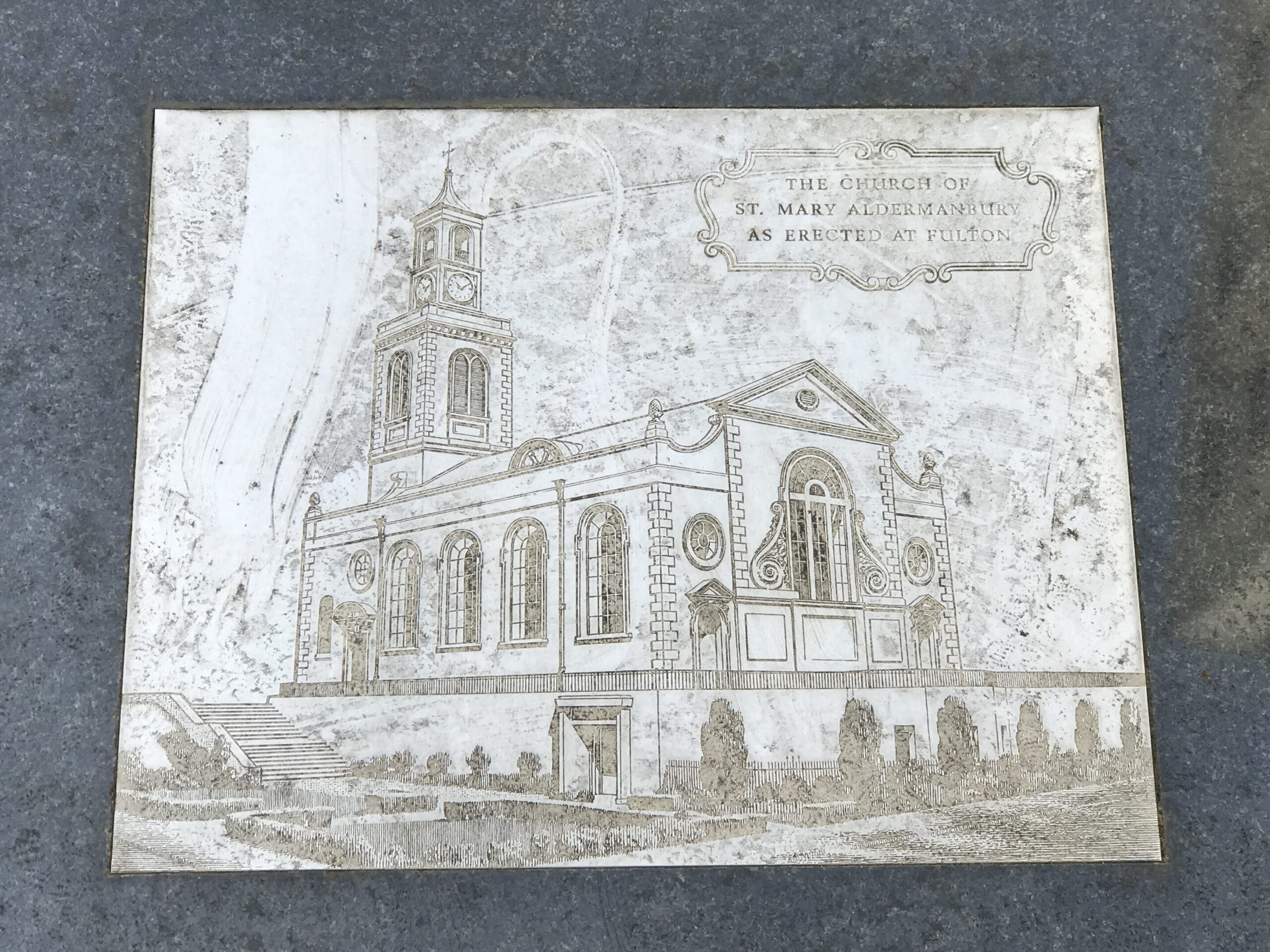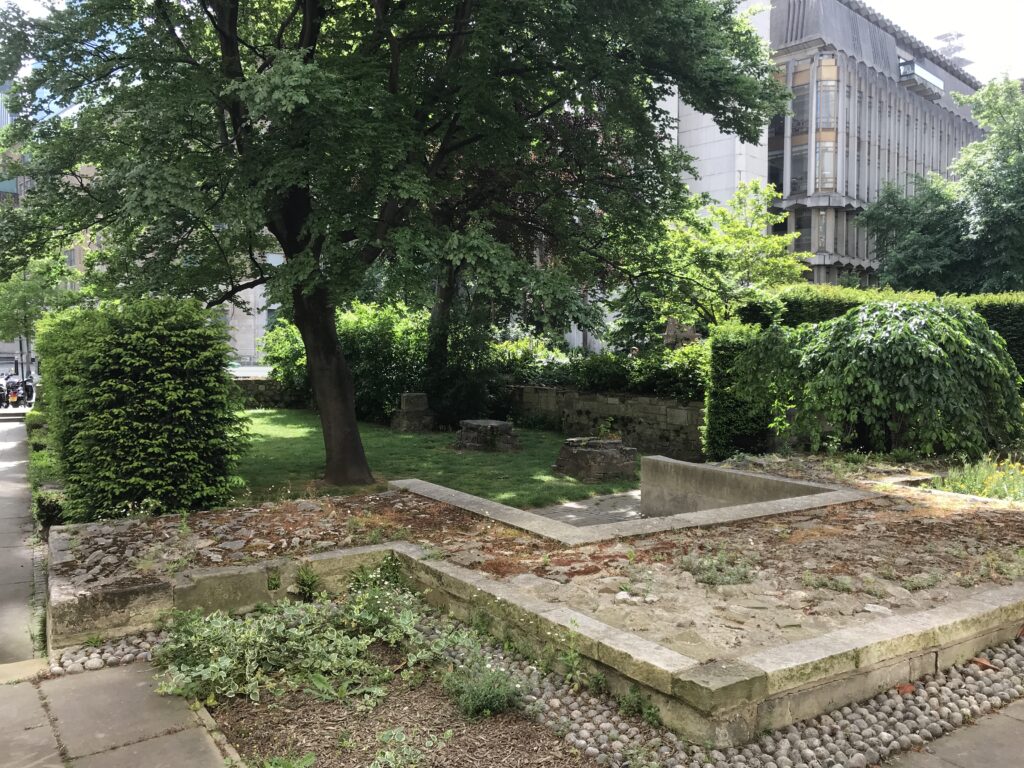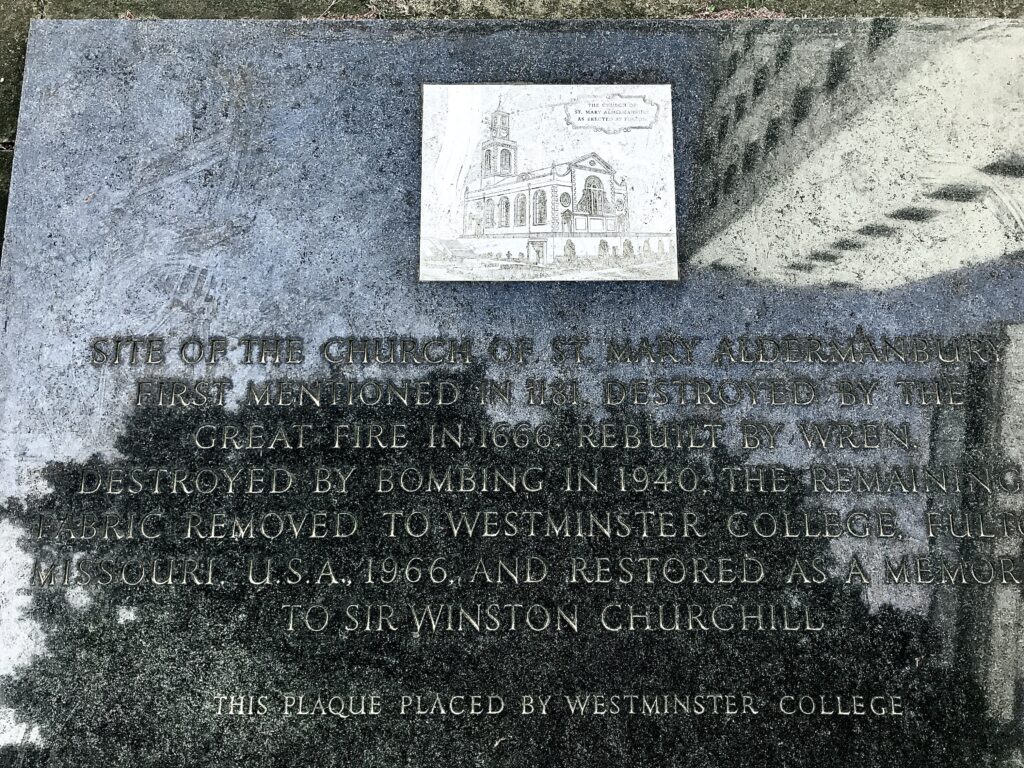
At the corner of Love Lane and Aldermanbury, round the back of the old City of London Police HQ, is a ‘pocket park’ that was (on a hot sunny day in May) full of City and building workers eating their lunches and catching some rays.
This is the site of the churchyard of St Mary Aldermanbury, a parish church first mentioned in 1181, destroyed in the 1666 Great Fire, rebuilt by Wren and gutted in the Blitz. The original church was where Henry Condell and John Heminges were buried. These were two actors who were members of the King’s Men, the acting company to which William Shakespeare belonged and for which most of his plays were written. It is Heminges and Condell that we can thank for the ‘First Folio’, the collection of Shakespeare’s plays published in 1623 some seven years after his death. Without the First Folio edition, it is more than likely that many of the plays would have been lost to history. At the corner of the old churchyard is a memorial to the two actors, topped with a bust of Shakespeare, that was erected in 1896.

Unlike many of the Wren churches that had been damaged in the war and were subsequently rebuilt, St Mary’s was still just a shell in 1961. Along with a handful of other “smoke-charred ruins that have become an eyesore” it was slated for demolition by the Corporation of London. And this is where things take a turn for the slightly bizarre.
Step forward a small mid-western liberal arts college, who decided to buy what remained, take it across the Atlantic and rebuild and restore the church, and recreate the interior exactly as Wren had designed it back in 1672 (or at least how it had looked pre Blitz).
Some 7,000 stones (650 tonnes of masonry) were numbered and shipped across to Virginia, then transported to Fulton, Missouri by train and then laid out like some vast jigsaw puzzle. The foundation stone was laid in October 1966, with the rebuilding finishing the following May. The reconstruction of the interior took another couple of years, but the church was rededicated on 7 May 1969 (starting with a parade led by 41 bagpipers).
And the reason for all this? The ‘small mid-western liberal arts college’ was Westminster College, the place where Churchill gave his ‘Iron Curtain’ speech in 1946. (He’d been invited there by President Truman (born in Missouri and formerly a Senator for that state)). Off the back of that, the college had set up the National Churchill Museum and the reconstruction of St Mary’s was conceived as a memorial to the wartime premier.
There are no connections that I’m aware of between Churchill and St Mary’s, and it would be easy to sneer (one British newspaper called the transplanting of the ruins ”…the last word in sentimental extravagance…”), but it has seen a splendid bit of Wren architecture restored and rededicated (and making it the only Wren building in the whole of North America and one of the oldest European buildings on the continent) and for that we should give a medium-sized cheer.
Back to London and one can see the footprint of the church, some of the medieval foundations on which Wren build the 1672 structure are still visible, and Westminster College have given this nice plaque to commemorate their work.


